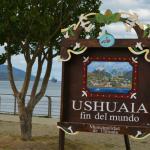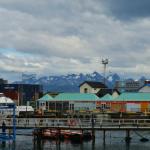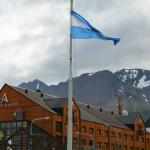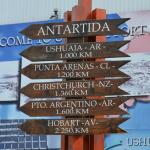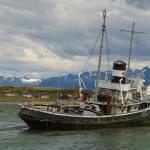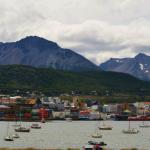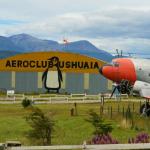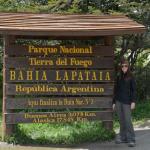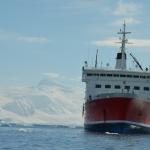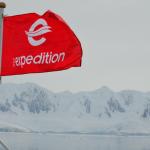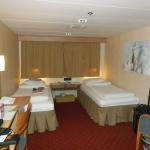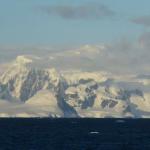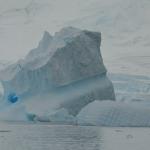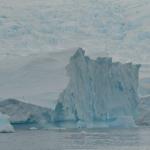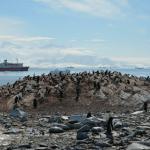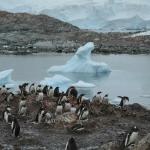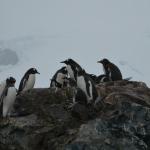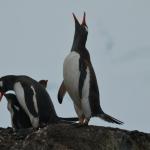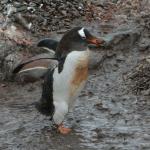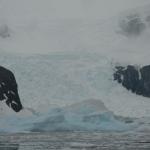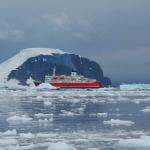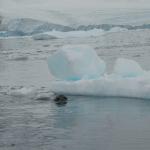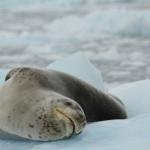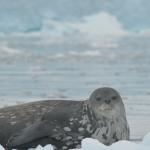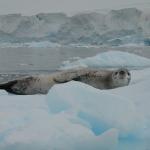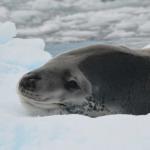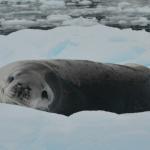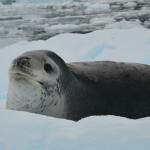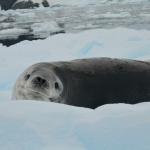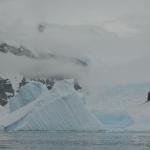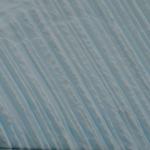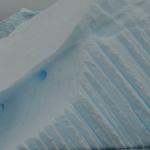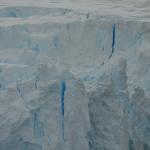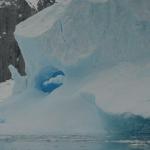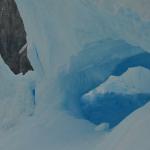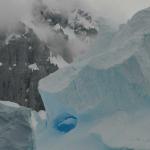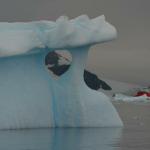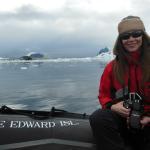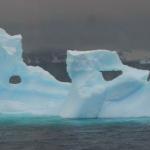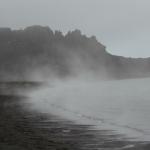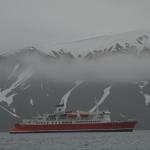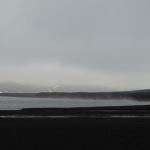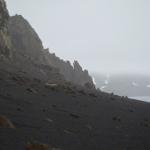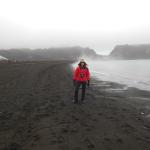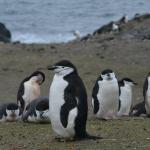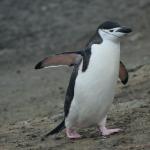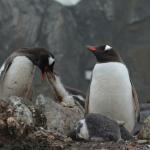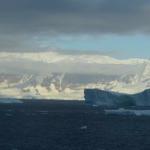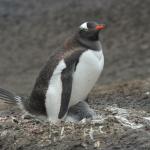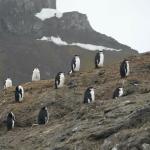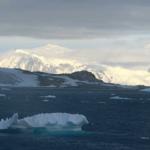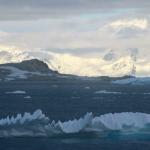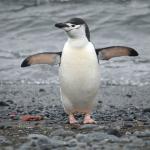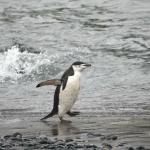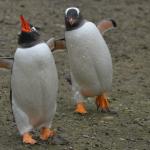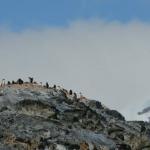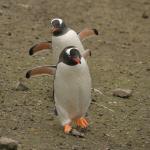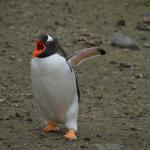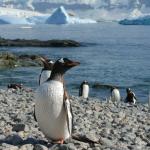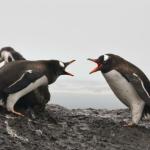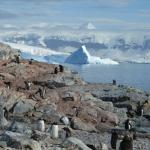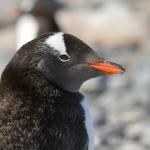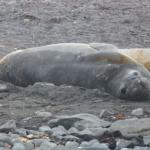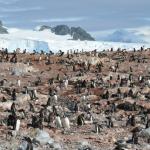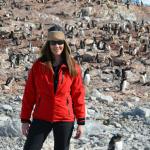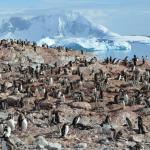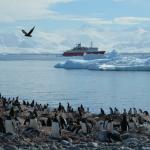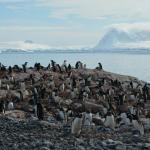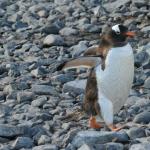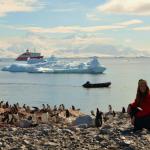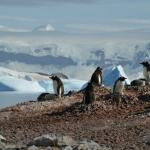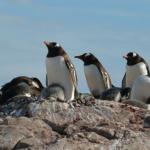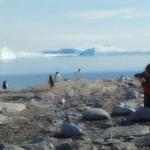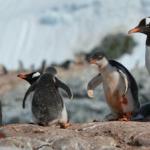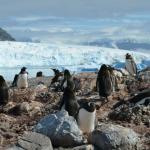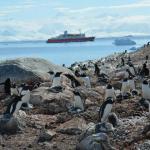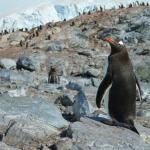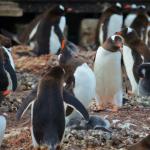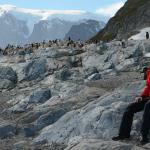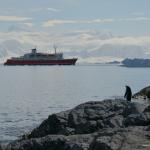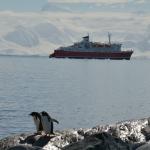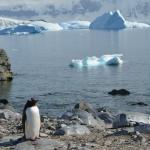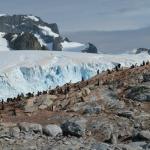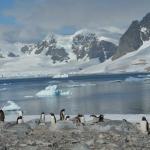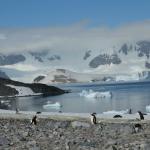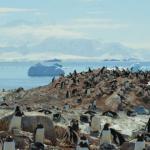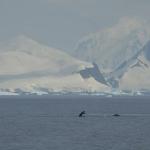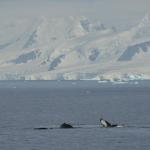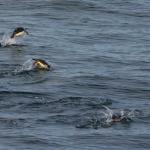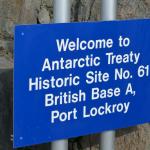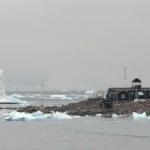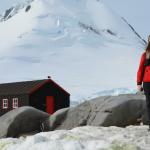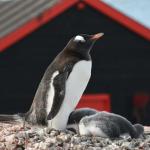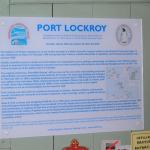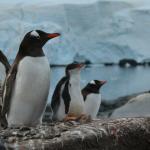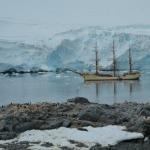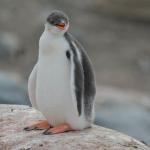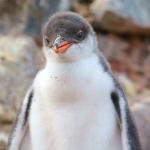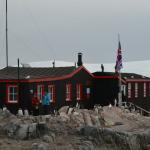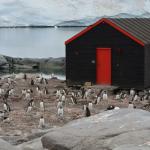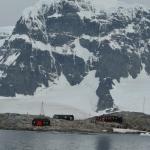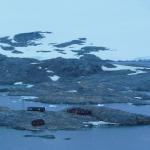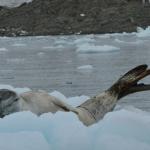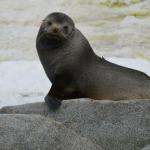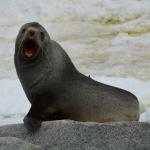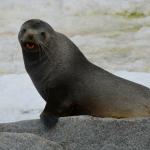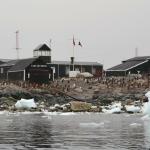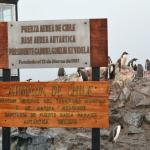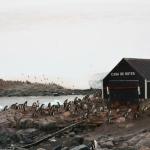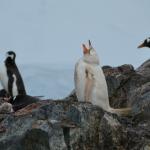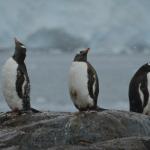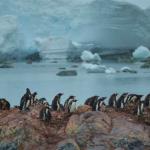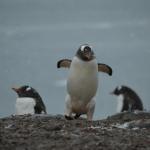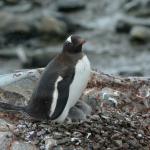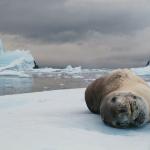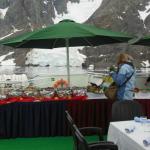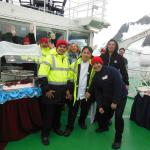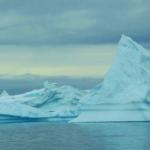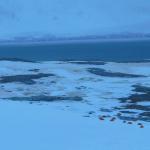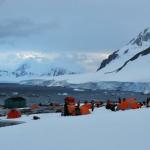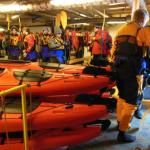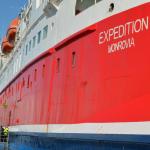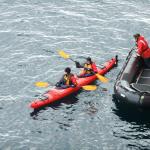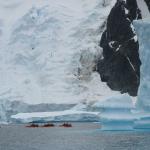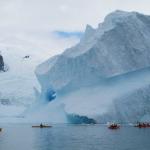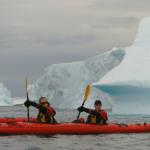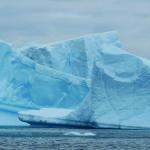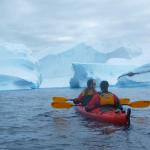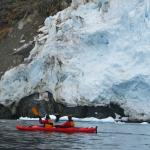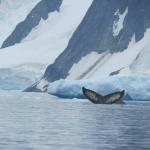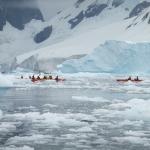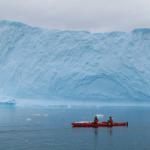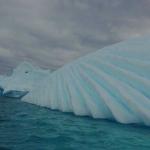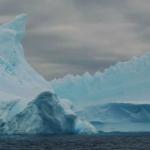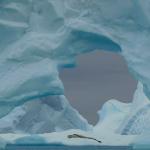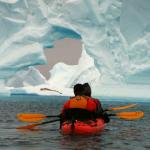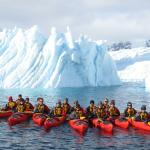© 2013 Sabrina Swenson. All Rights Reserved.
Antarctica
February, 2013
The frozen continent at the bottom of the earth is a photographers dream. With penguins, seals, whales and icebergs so large they dwarf ships, Antarctica does not disappoint! A desert with an annual precipitation of only 8 inches along the coast and far less inland, it's about twice the size of Australia. I had wanted to come to this place for what seems like ages.
I departed for what is commonly regarded as the southernmost city in the world; Ushuaia, Argentina. I spent a few days wandering around this delightful town. The day to depart for Antarctica came and I could see the small exploration ship docked at busy Ushuaia harbor. As the busiest port for ships heading to Antarctica it is perpetually busy during the Southern hemisphere summer months of November to March. The HS Expedition I was traveling on was bright red and small compared to most ships of today. It held a total of only 130 passengers. Larger ships that hold thousands of passengers are not allowed to stop at Antarctica due to the shear volume of humans on board. For this reason I picked a small ship. I figured I didn't want to go all that way and not even step foot on the place! I boarded the ship on a sunny afternoon and headed to my cabin. I was happy to find decent size accommodations. The cabin was well laid out and had everything you could need. It also contained something for which I had no idea of it's purpose. A foam triangle approximately three feet long located under each bed. It wasn't until the Drake Passage that I realized it's use. When the ship really starts to roll and pitch going through the passage, the foam triangle, with the small end wedged against you, keeps you in the bed rather than on the floor! The bathroom was small, as was to be expected, but was functional. The tiny shower in the corner was reminiscent of the one in my flat in Paris when I lived there years ago. While washing my hair, one elbow would always inevitably be sticking out of the shower! The state of the cabin was not really that important as it was the scenery that was the reason I was there. I quickly met the girl that would be my roommate for the voyage; a hilarious English nurse who added much laughter to the trip. The first day was pleasant as we found our way around the ship and met all the other passengers. Meals were served in the dining room on the top deck and had great views.
The second day, as we were sitting in the lounge listening to one of the outstanding lectures offered about the continent and it's wildlife, we all felt a sudden sway in the ship. The dreaded Drake Passage had announced itself as imminent. I quickly took some of my sea sickness medicine which up until then I had completely forgot about. I wasn't going to bother with bringing any but was told again and again what a dreadful ride the Drake Passage was. Within a short time the ship was rocking and rolling far more than I would have ever guessed, we were now well on our way into two days of tumultuous churning. The Drake Passage (named after famous English seaman and global circumnavigator Sir Francis Drake) is the body of water which lies between the Southern tip of South America and the South Shetland Islands of Antarctica. The Drake Passage occurs where the fast flowing Southern Ocean waters are squeezed between these two land masses resulting in an inevitably "bumpy" ride. I felt a bit queasy and realized I had taken the medication too late. I made a mental note to take the medication much earlier on the return so as not to make the same mistake twice. Although I didn't get sick those two days, I certainly did not feel my best. My poor roommate Rebbecca, however, had warned me in advance that she was easily sea sick. It wasn't long before, while attending that lecture, Becca suddenly laid down across the seats. Shortly thereafter she made a hasty exit and no one would see her again for the next two days other than myself back in the cabin. I found out quickly that lying down instantly makes you feel better when sea sick.
I had wanted to listen to all the great lectures but didn't feel well sitting upright. I found if I would scoot down as far as I could in my chair and lean my head back, I could feel just well enough to make it through an entire lecture. I was certainly not alone as I looked around the room. We looked like a sad bunch with many people hunched over, laying down and an all around greenness in our faces. I was in awe of the excellent staff of lecturers who carried on even though they were being literally tossed around the stage. Their obvious knowledge and enthusiasm about their subjects was impressive and made it a joy to listen.
I had the privilege of being one of only sixteen people on board to partake in kayaking once we arrived at Antarctica. There were eight tandem sea kayaks and sixteen of us participating. As such, the kayakers were called up, what seemed to be endlessly, to have meetings about the kayaking expedition once we arrived. We met our guides as well as the others that had signed up and were briefed on what we could expect and the rules about our journey. We also had to sign our life away relinquishing all responsibility from the ship for our participation in kayaking Antarctica. Later in the day we were called down to the bottom deck to try on the immersion suits we would be wearing to make sure they fit properly. On a hot deck, trying on an immersion suit with a tight fitting rubber neck and sleeves is not something you want to do when you are sea sick. I leaned against the wall while putting the suit on. On top of this was a kayaking spray skirt (which keeps water out of the kayak) then a life jacket on top for good measure. I finally gave up the fight against nausea and like others in the group finally laid on the floor, instantly feeling better. I eventually got all the gear off and staggered back to the cabin and flopped into my bed where I always felt best. Becca stirred with a grunt and asked me how it was. I told her the bottom deck was not pleasant and if she had to go down there she should take a bag! When she went down later in the day to be fitted with boots to go ashore she did loose it and later thanked me for recommending a bag. And so it would be for the two days going through the Drake Passage and the two days coming back. Becca would stay in bed all day and night trying to stay well and I would go out and do things and just as quickly stagger back to lay down upon where I would give her an update as to what was going on outside the cabin. Sea sickness medicine seems to cause serious drowsiness as everyone I spoke to said they were incredibly tired. We weren't exerting any physical energy at this point so I can only assume it was the medicine that was making us so tired. Whenever I could steel away to the cabin to lay down for a few moments, I would. Apparently everyone else was doing the same. After two full days of rocking and rolling, it suddenly stopped just as quickly as it had begun. We were through the passage and now closing in on Antarctica.
The fourth morning I woke to a white continent outside my window. It was simply magnificent, clean and bright. It was a joy to see land after three days of open sea. For the next four days we would stop at various points on Antarctica . Since only one hundred people are allowed on the continent from a ship at one time, the group was split in two. While the first group went ashore, the kayakers went kayaking usually for around two hours. We then would head back, quickly change and then would go ashore with the second group. We would board zodiacs from the mud room at the bottom of the ship, the same place from which we launched our kayaks. After a quick ride to shore we were free for around two hours to check out the area and wildlife. Photographing the penguins was a highlight as these funny animals all seem to have very individual personalities. I watched them squawk and squabble with one another. One scolding another for stealing a rock to make a nest amongst a variety of other domestic disputes. Some of the penguins were molting. It's a miserable time for the penguin when once a year new feathers grow under the old ones pushing them out. The old feathers do not fall out until the new one is completely in place. They molt in patches and it gives the penguin a very scruffy look. During this time the penguins will not enter the water. They survive on fat reserves that were built up before the molt started. They simply stand and wait for the molting process to finish before resuming their life.
Interestingly, although no country is allowed to claim Antarctica as it's own, several countries do have posts on Antarctica. We stopped one day at Port Lockroy which is a British base. Two English girls worked in the gift shop as well as ran the post office. Yes, Antarctica has a post office although everyone I sent postcards to is still waiting to receive them.... We also stopped at a Chilean base which is run by Chilean military personnel. These seemed like lonely jobs indeed but apparently they only work one season (November-March) before heading back home.
One day kayaking our guide spotted a whale. We took off in hot pursuit of it. Well, as hot of a pursuit as you possibly can in a kayak. Our guide said he smelled "whale breath". I thought he was kidding at first but then definitely smelt something I've never smelled before. It turns out he wasn't kidding. We finally caught up to the whale and got some great pictures of it's tail.
While kayaking we were also warned not to lag too far behind and instead to stay in a tight group. The guide said even though the kayaks were a bright red against the Antarctic white, we could easily get lost amongst the massive icebergs. I can imagine if you weren't paying attention you could easily get lost being such a tiny spec in such a huge landscape. Since getting too close to icebergs is never a good idea, we were also told if an iceberg suddenly calves (comes crashing down) we should point the front of the kayak directly at the berg which would hopefully push the kayak away with the waves that it would produce. Luckily we had no calving but we did hear a couple of different times what sounded like avalanches in the distance.
One evening I also had the "pleasure" of spending a night camping on the continent. About forty of us grabbed tents and took zodiacs to land. We found a flat spot and pitched our tents. There was one small building nearby that was apparently full of emergency supplies for anyone that desperately needed them. This was off limits to us but did make handy cover to pitch the open air portable toilet behind it. A rudimentary system of "if the flag is up, someone is using the loo, if it's down, it's free" was used as a warning system. I must say, it was the most beautiful view from a toilet I've ever had. We all did a short hike up the hill our tents were perched against and spotted the ship on the other side along with Port Lockroy. When I looked back down where our tents were they looked so tiny and minuscule when compared with the vast terrain that surrounded us. It makes you feel very small in the world indeed. We walked back down and after walking around the area a bit and getting some more pictures of penguins, eventually called it a night. Although we had mats and down sleeping bags, not a lot of sleep was to be had that eventing. We were woke bright and early and after packing up our gear were swept off back to the ship.
Four glorious days were spent at the continent kayaking, going ashore and picture taking. Inevitably our time to leave came and with that the captain pointed the ship North for the Southern tip of South America. Since he had said his door was always open, a few of us popped in to say hello to him and his crew and have a look around. The bridge was impressive with all it's equipment not to mention the best view in the house.
More lectures and films ensued before the dreaded rocking and rolling of the Drake began once more. This time I was better prepared and took the sea sickness medicine much earlier. I fared very well on the way back but still stole cat naps here and there due to the tiredness that accompanied the medicine. One morning the ship was rolling and pitching so badly they closed the dining room as it was too dangerous to be in there. They, instead, brought a breakfast box to your room or the lecture lounge or wherever you happened to be on the ship. You know a ship is rolling big time when you look out the big windows and see nothing but water, no air! For lunch that day we did eat in the dining room but had such huge waves that in spite of there being a rubber gripper mat laid out on all the tables holding the plates and cutlery in place, there was still massive crashing at the tables as well as from the kitchen. I praise the staff who acted totally unaffected by the chaos as they continued on as if nothing happened. How they carried large trays full of dishes in one hand above their head in this pandemonium is beyond me.
Two full days of the Drake and we were once again through it. The last day at sea was quiet and peaceful. The lectures didn't stop and I hit as many as I could. It was sad to say goodbye to such a great group of people. I departed the ship on a glorious morning once again back in Ushuaia.
Antarctica is one fantastic place, it was a trip of a lifetime. It was everything I thought it would be and more. Trying to describe it simply pales to the actual experience.

